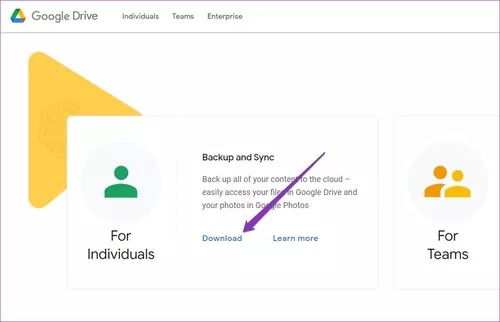How To Add Google Drive To Windows 10 File Explorer?
Google Drive Lets You Sync Files For Access On Different Devices, However, You Will Need To Enter Your Password Each Time.
You can add Google Drive to Windows 10 File Explorer with the Backup and Sync app for easier access to avoid this issue.
By accessing the Google Drive folder in Windows File Explorer, you can view, modify, or even delete files without the need for a browser. Any changes you make to the files will be automatically applied to Google Drive. So you can manage files in the system and cloud storage space through File Explorer.
In this article, we want to teach you how to add Google Drive to File Explorer in Windows 10 and also manage files through File Explorer.
Add Google Drive to Windows 10 File Explorer
To add a Google Drive folder to the File Explorer side menu, you need to download and configure Backup and Sync for your computer. To do this, follow these steps:
Step 1: Go to the Google Drive download page and click the download button below Backup and Sync. Click on Agree and continue downloading.

Step 2: Run the exe file and follow the displayed instructions to install the Backup and Sync program on your system.
After installing the program, the Backup and Sync app will be placed on the desktop and Google Docs shortcuts, sheets, and slides.
Step 3: Launch Backup and Sync and sign in to your Google Account.

Step 4: Select the folders of your system that you want to back up continuously on Google Drive. If you want to back up images and videos directly to Google Photos, enable the “Upload photos and videos to Google Photos” option and then click Next.

Step 5: You can select the Google Drive folders you want to access directly from File Explorer. You can sync everything instead. Select the options you want and click the Start button.

When the sync is complete, the Google Drive folder will appear in the Windows 10 File Explorer, and you can access it in the menu on the left.

Now that the Google Drive folder has been added to File Explorer, you need to do several more things to manage the files directly.
Manage Google Drive via File Explorer
Inside the Google Drive folder, you will see the files and folders you have selected for syncing. Items that have a green tick indicating that they have been successfully synced with Google Drive. Every file you put in Google Drive will automatically sync with your account.

If you delete a file from Google Drive, a red cross will appear on the file, indicating that it is not in the cloud. In addition, a notification will be sent to you in the Backup and Sync app, giving you the option to recover the file or delete the deleted file.

You can add up to 3 accounts to Backup and Sync and manage them simultaneously via Windows File Explorer.
Delete Google Drive files via File Explorer
By default, deleting a file from File Explorer does not mean deleting it from your Google Drive account. This feature is to prevent a file from being accidentally deleted from your cloud account.
However, you may want to enable this option in the Backup and Sync app to delete the file from the system and Google Drive simultaneously. To do this, follow these steps:
Step 1: Click on the Backup and Sync icon in the taskbar. Click the three-dot option at the top of the window that opens, then select Preferences in the list.

Step 2: Now go to the My Laptop section on the left side of the page and use the drop-down menu under Google Drive to select “Always remove both Copies.” Click OK at the end.

After that, deleting any file from the Google Drive folder will mean deleting it from the cloud. So you can better manage the content inside Google Drive and delete unnecessary files and folders through the same file explorer.
Remove the Google Drive folder from Quick Access.
If you no longer want to see the Google Drive folder in File Explorer, you can easily delete it. To do so, right-click on the Google Drive folder and select “Unpin from Quick access.”

If you disconnect the system from your account or decide to uninstall Backup and Sync, all synced files and folders will remain unchanged.
Fast sync
With direct access to Google Drive via File Explorer, you can sync files faster between the system and the Google Drive cloud. If you want to free up space inside Google Drive, accessing it through File Explorer is a good idea.

